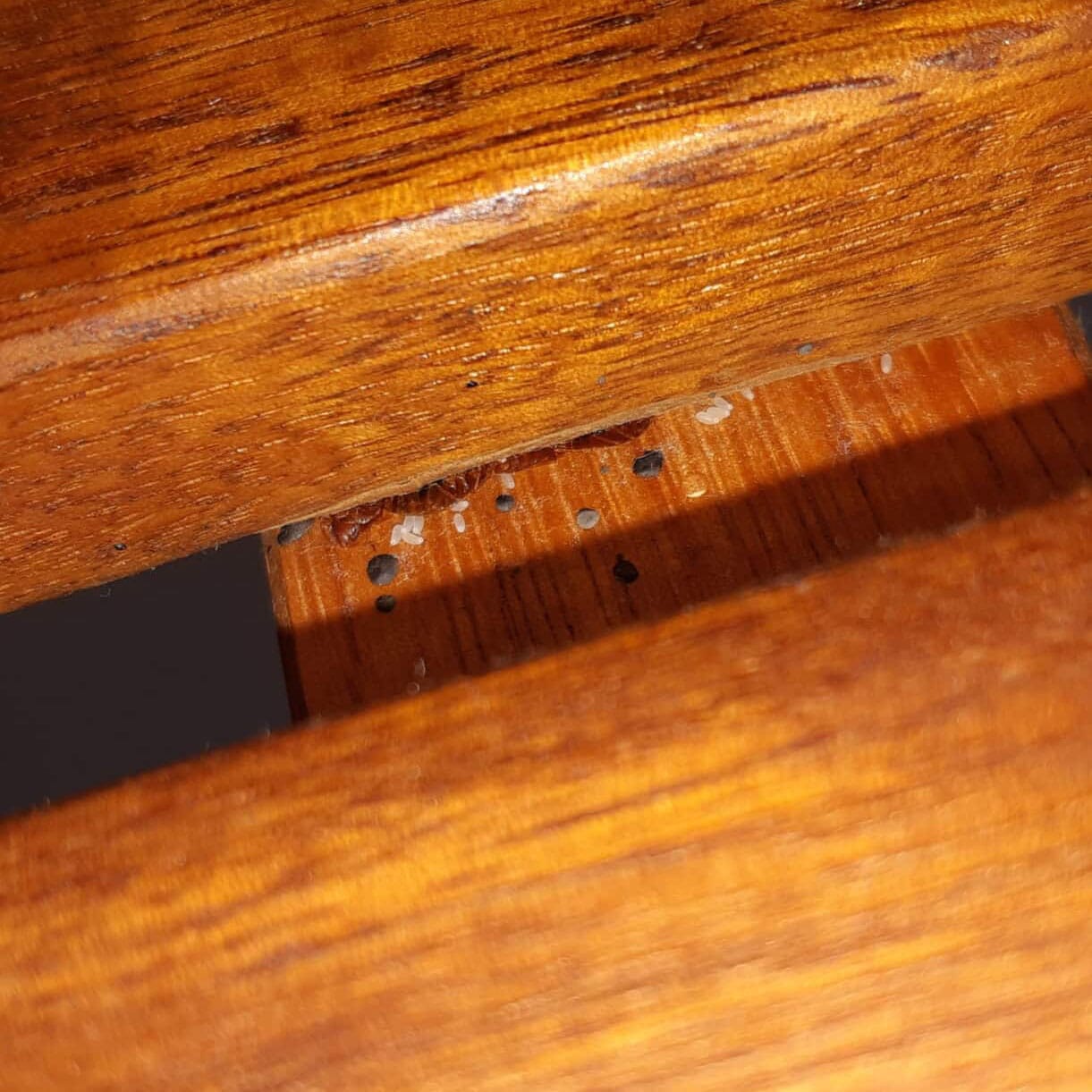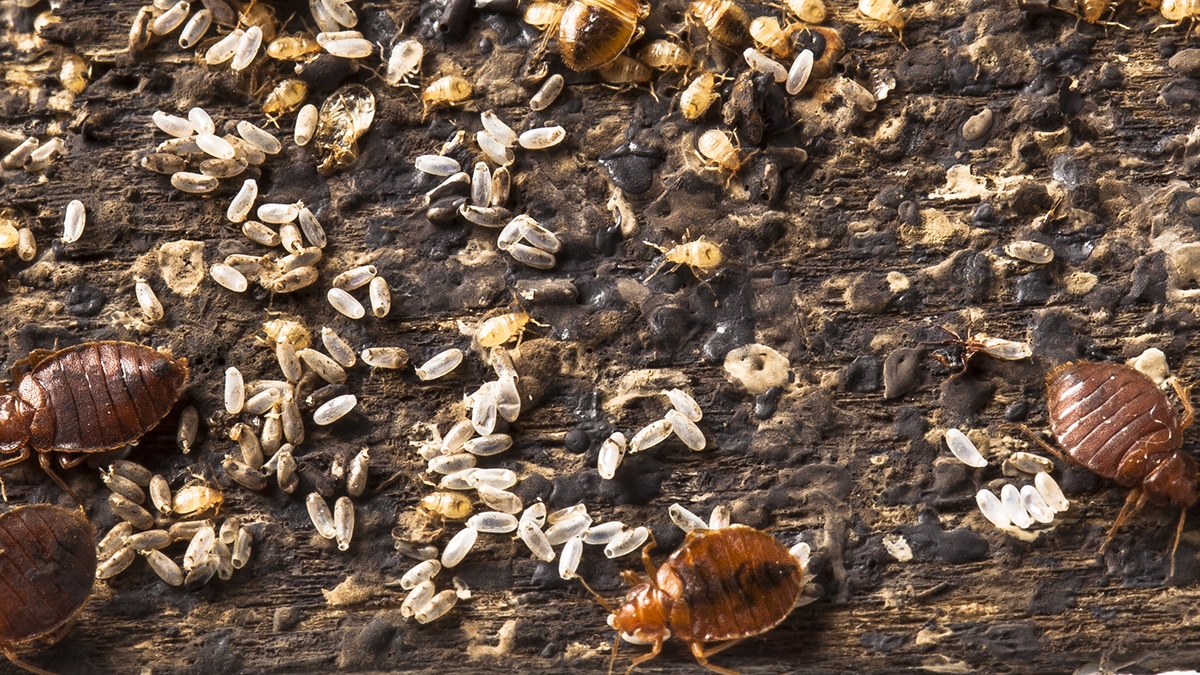
In the article
Last Updated on 01/11/2025 by Tony Abrahams
Something about the night seems to call out the creatures we’d rather not share our beds with. And among them, none are more notorious than bed bugs. Tiny, quiet, and frustratingly good at hiding, these pests sneak into our bedrooms and leave behind one of the clearest signs they’ve moved in, their droppings.
Spotting bed bug droppings early can make all the difference. It’s the kind of detail that can save you from weeks of itching, sleepless nights, and expensive treatments.
Facing the Itchy Issue: Bed Bug Basics
Merely thinking about bed bugs is enough to make one’s skin crawl. These pests are infamous for their hitchhiking prowess, effortlessly moving from one location to another and making themselves at home in our living spaces. Typically, it’s the bed bug bites, itchy, red welts, that alert us to their presence, turning what should be a restful sleep into a fitful ordeal.
However, there’s another, often overlooked yet equally significant sign of their incursion: bed bug droppings.
Understanding Bed Bug Droppings: What Do They Look Lke?

Picture of bed bug droppings completely covering the nest, a clear sign of a long-term infestation.
Bed bug droppings, essentially the pests’ excreted blood, manifest as tiny, dark spots that reveal their hiding places. Appearing granular, these spots are most commonly found in areas where bed bugs feed and lurk, such as on mattresses, sheets, furniture, and even walls.
Thus, a careful examination of these areas can expose their presence. Indeed, recognizing these tell-tale marks is the first step in the battle against bed bugs.
Spotting the Difference: Bed Bug Droppings vs. Ordinary Stains
It’s important to note that not every dark spot discovered at home signals the presence of bed bugs. However, there’s a reliable method to differentiate bed bug droppings from other stains: bed bug droppings are usually clustered together and will smear into a reddish-brown streak when wiped with a wet cloth. This distinctive characteristic aids in accurately identifying bed bug presence and prepares us for the necessary actions.
The Importance of Early DetectionDiscovering bed bug droppings is unsettling, to say the least, but it serves as a vital indicator of an infestation. Although these droppings are not harmful in themselves, they signify that bed bugs are nearby, potentially leading to disrupted sleep and allergic reactions.
Moreover, the quantity and distribution of these droppings can offer insight into the extent of the infestation, steering us toward the most effective treatment strategy.
Hunting for Clues: How to Inspect for Bed Bug Droppings

Bed bug faeces (black dots) and eggs (white dots) visible on bedframe slats is a clear signs of an active infestation.
Embarking on a thorough investigation is crucial. Arm yourself with a flashlight and begin with the bed, scrutinizing the mattress seams, bed frame, and adjacent furniture for small, dark clusters. Furthermore, it’s imperative to extend your search beyond the bedroom to other common areas, as bed bugs are known to migrate throughout a home in search of new hiding spots and hosts.
Taking Action: Immediate Steps After Discovering Droppings
Once bed bug droppings are confirmed, it’s paramount to act quickly to curb the infestation. Initiating with a comprehensive vacuuming of the affected areas to remove droppings and any visible bed bugs is a good start.
Proceed by washing all bedding and affected garments at high temperatures to eliminate any remaining pests. Additionally, encasing your mattress and pillows with bed bug-proof mattress covers can fortify your defenses against future invasions.
Choosing Your Battle Strategy: Why DIY Beats Pest Control
No matter how big your infestation is, you don’t need to call a pest controller. The DIY Isolation Method gives you everything you need to eliminate bed bugs safely, naturally, and permanently – without chemicals or repeat visits.
Using a steamer for instant kill, applying Diatomaceous Earth for long-term protection, and setting up barriers under your bed legs ensures every bed bug in the room is killed; even in large infestations. There’s no need to spray walls, empty the room, or leave the house.
The only exception might be if you’re elderly, disabled, or physically unable to lift or move parts of the bed for setup. In that case, getting someone to help with installation is all that’s needed; not a pest controller. This system is easy to use, affordable, and scientifically proven to keep killing bed bugs for years after a single setup.

Diatomaceous Earth is a natural, organic mineral that’s completely poison-free.
Fortifying Your Defenses: The Isolation Method
When it comes to preventing and stopping bed bug infestations, nothing beats the simplicity and effectiveness of the Bed Bug Isolation Method. Unlike traditional pest control that sprays chemicals across the entire room (often more than once), this method stops bed bugs at the source;the bed – so you don’t need to treat the room.
Quick, effective setup:
- Steam for instant kill: Use a bed bug steamer on the bed frame, slats, seams, joints, and screw holes to kill exposed bugs and eggs immediately.
- Create the long-term kill zone: Apply a light, even layer of Diatomaceous Earth on the bed frame and slats, and into cracks and joins where bugs travel.
- Block access to the bed: Place barriers under each bed leg so any bug trying to feed must cross the kill zone.
- Seal the mattress: Fit a Bed Bug Proof Mattress Cover to trap existing bugs and make future checks easy.
You do not need to spray walls, empty wardrobes, or vacate the house. Every bed bug in the space is forced to cross the steamed-and-powdered frame/slats or the leg barriers to reach a blood meal, which dries them out naturally and permanently.
Set it up once and sleep in the bed the same night. It’s a poison-free system that keeps working for years and is easier, safer, and more practical than standard pest control for most homes.
Wrapping Up: Keeping Bed Bugs at Bay
In conclusion, being vigilant for bed bug droppings is not merely a facet of pest control; it’s a proactive measure to safeguard your home and peace of mind. Equipped with the right knowledge and tools, you can deter these diminutive intruders from making your home theirs.
Remain vigilant, and bear in mind that the optimal defense against bed bugs is a strong offense, starting with the early detection of those sneaky droppings.
Frequently Asked Questions: Bed Bug Droppings
1. What do bed bug droppings look like?
Bed bug droppings look like tiny black or dark brown dots — a bit like ink spots from a fine-tip pen. They’re usually the size of a pinhead and found in clusters along mattress seams, bed frames, or furniture creases. When fresh, they smear easily and dry into a slightly crusty mark.
2. What can be mistaken for bed bug droppings?
A few things, actually. Pen ink marks, dark lint, and dust specks can all look similar at first glance. Even crumbs or dirt might fool you, but they won’t smear like true bed bug feces, which leave a reddish-brown streak when wiped with a damp cloth.
3. What are the tiny black specks in my bed?
Those black specks could be bed bug droppings, especially if you’ve noticed bites or blood stains too. Sometimes flea dirt looks similar but turns red when wet. Other possibilities include lint, dust, or droppings from other insects, so it’s worth inspecting closely.
4. How do I confirm it’s really bed bugs?
Grab a torch and take a close look around mattress seams, bed legs, and cracks in furniture. You’re looking for other signs; shed skins, live bugs, or small blood stains. If you find any of those along with droppings, it’s time to act fast and start treatment.
Watch Our DIY Videos: Stop Bed Bug Droppings With The Isolation Method
Are you looking for an organic DIY treatment? These step-by-step videos show you exactly how to use the Isolation Method on different types of beds.
For an Ensemble Bed
For a Bed with Slats
If you’ve enjoyed our blog about Bed Bug Droppings, you might also like to read about the Bed Bug Life Cycle.
Sources: Bed Bug Droppings
Oxford Academic (Perspectives on Biology and Management)
National Library of Medicine (Clinical Relevance and Control Options)



Leave a Reply